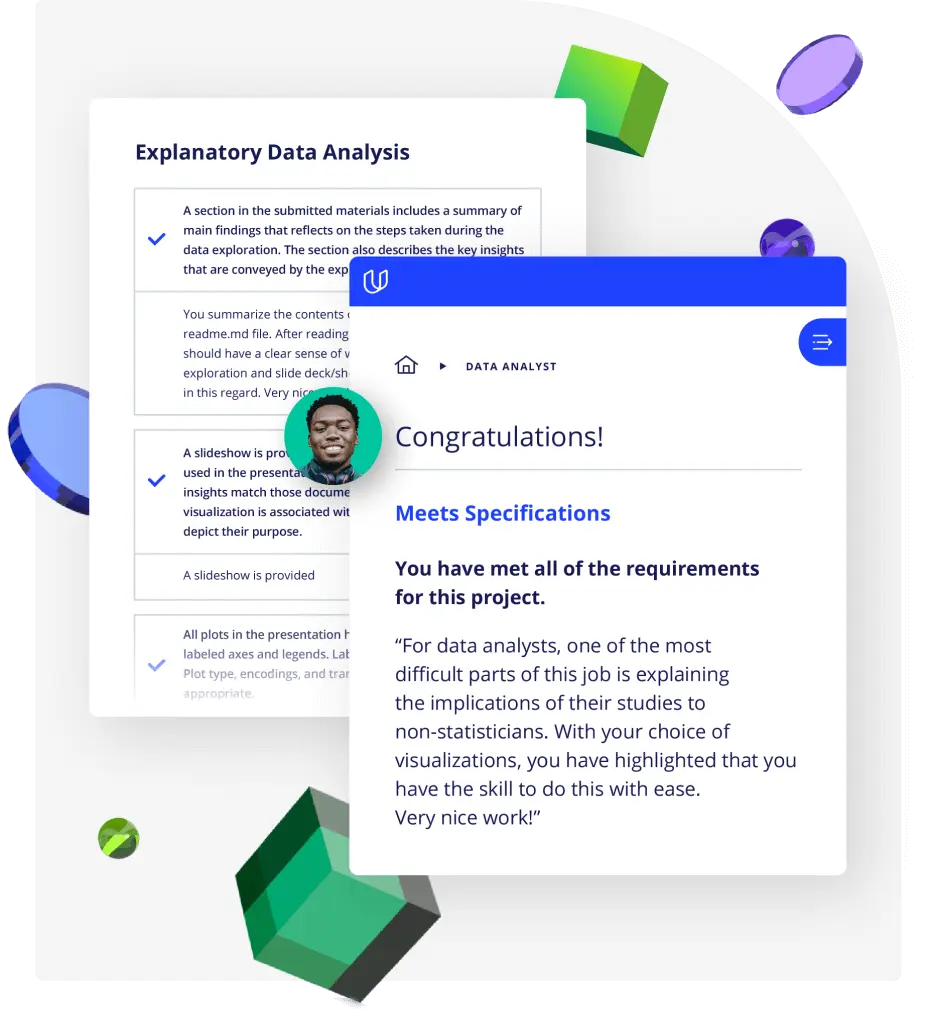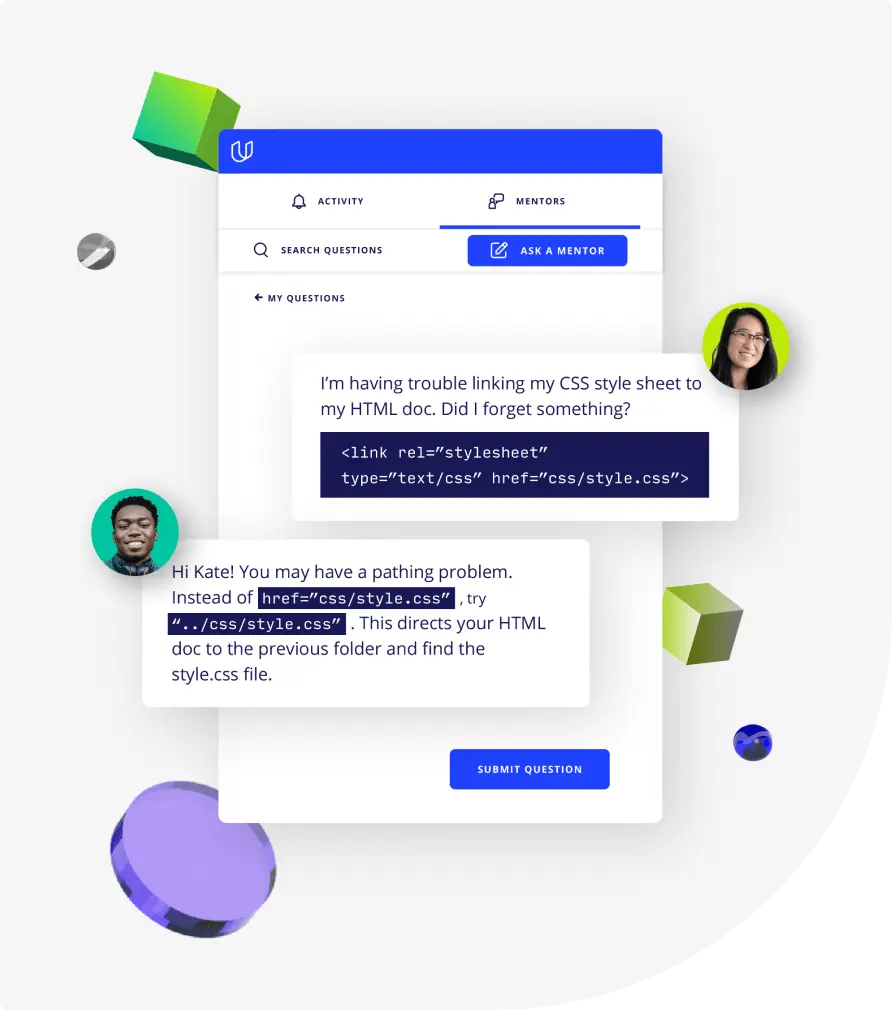About Data Analyst
Our Data Analyst Nanodegree program is a meticulously crafted data analyst online course that imparts essential skills for cleaning up messy data, uncovering patterns and insights, making predictions with machine learning, and effectively communicating findings. This intermediate-level program involves real-world projects where learners can apply their skills in data visualization, exploratory data analysis, latent variables, and more. The curriculum includes hands-on experience with Python, Pandas, NumPy, as well as advanced data wrangling and visualization using Matplotlib and Seaborn.
At Udacity, we empower our learners with practical, industry-relevant skills taught by professionals like Josh Magee, Ria Cheruvu, and Matt Maybeno. Our data analyst course is designed not just to impart knowledge but to ensure its application in real-world scenarios, enhancing both understanding and skill retention. Join us to advance your career in data analysis, where we provide the tools and support for your professional growth.







